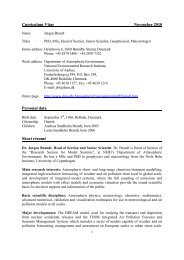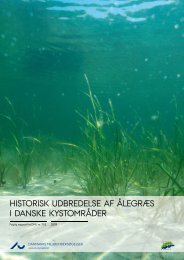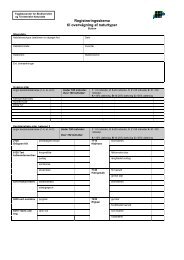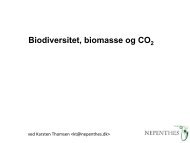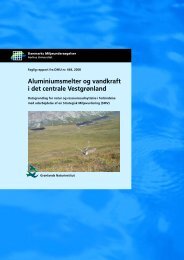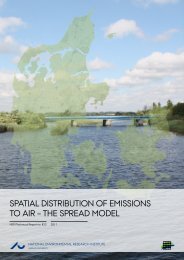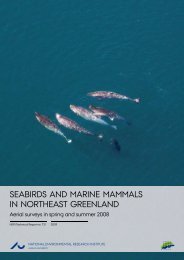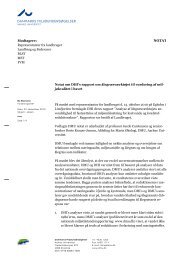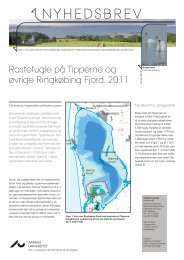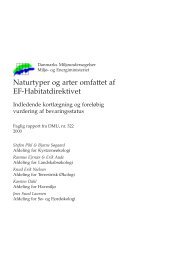Bestøvningsforhold og -behov i dyrkede afgrøder
Bestøvningsforhold og -behov i dyrkede afgrøder
Bestøvningsforhold og -behov i dyrkede afgrøder
You also want an ePaper? Increase the reach of your titles
YUMPU automatically turns print PDFs into web optimized ePapers that Google loves.
8<br />
Summary<br />
This report is one of three reports prepared for the Danish Ministry of<br />
Food, Agriculture and Fisheries (The Danish Plant Directorate) for the<br />
project ”Pollination conditions and the requirements for crops and wild<br />
plants”. The purpose of this report was to investigate pollination conditions<br />
and requirements in cultivated crops.<br />
Several crops are dependent on insect pollination, for which the honey<br />
bee is normally considered the most important one. But bumblebees,<br />
solitary bees, butterflies and hover flies also play an important role. As<br />
far as the area they cover, the most important insect pollinated crops are<br />
winter oilseed rape, fruit trees and berry bushes. It is estimated that insect<br />
pollination is worth between 421 and 690 million DKK a year in<br />
Denmark. Most of this pollination is done in the spring, especially for<br />
oilseed rape, fruit trees and berry bushes.<br />
In the spring, oilseed rape, fruit trees and berry bushes are the source of<br />
pollen and nectar for both honey bees and other pollinators. However, in<br />
order to have good conditions in Denmark, honey- and bumblebees lack<br />
good sources of pollen and nectar throughout the summer. White and<br />
red clover for seed production are good sources in the middle of summer,<br />
just as clover-grass fields should be a good source throughout the<br />
summer. However, usually they are not, as the clover in the clover<br />
meadows often does not bloom due to numerous cuttings or high grazing<br />
pressure. As oilseed rape and fruit crops are mostly located on the islands<br />
and in east Jutland, there are not many good sources of nectar and<br />
pollen in the southern, western and northern Jutland, which causes the<br />
pollinators to be completely dependent on sources of pollen and nectar<br />
in gardens, field boundaries, small biotopes and forests. The same conditions<br />
apply throughout the summer on the islands, unless there are areas<br />
with seed production, especially white and red clover.<br />
Many factors affect the conditions for pollinators in Danish farmland.<br />
Among these, crop rotation, herbicides, pest control, ploughing etc. undoubtedly<br />
play a part, but the extent of the importance of these factors is<br />
unknown.<br />
Possible measures to improve the conditions for pollinators in the farmland<br />
could be:<br />
• diversifying the choice of crop in order to ensure that more pollen<br />
and nectar be available throughout the spring and summer all over<br />
the country.<br />
• diversifying the landscape in order to create a better mosaic of flowerrich<br />
habitats in agricultural land.<br />
• improving the quality of live hedges, boundaries, small biotopes and<br />
forests in order to create good sources of pollen and nectar for pollinators<br />
and nesting sites for bumblebees and solitary bees.<br />
• less efficient weed control.<br />
The following gaps in knowledge are identified:





